Ancient Greek-Roman philosophy Ancient Greek and then Roman

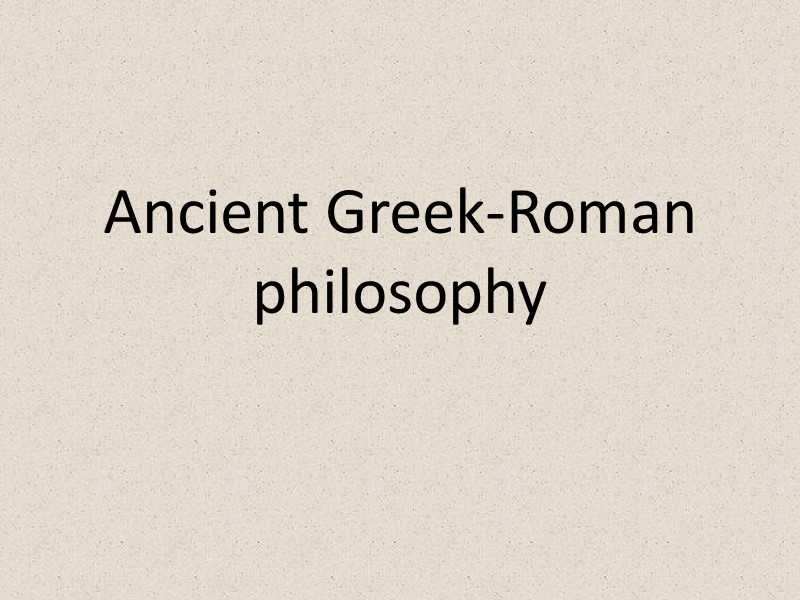
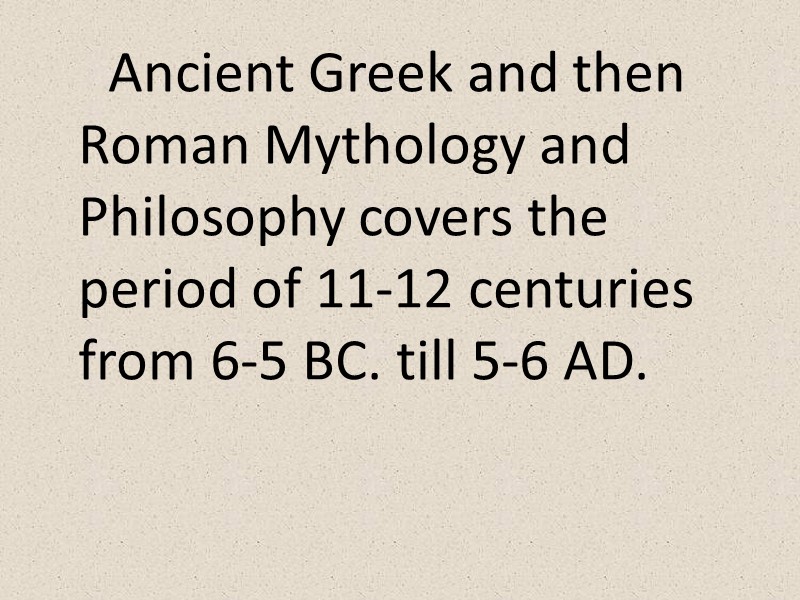
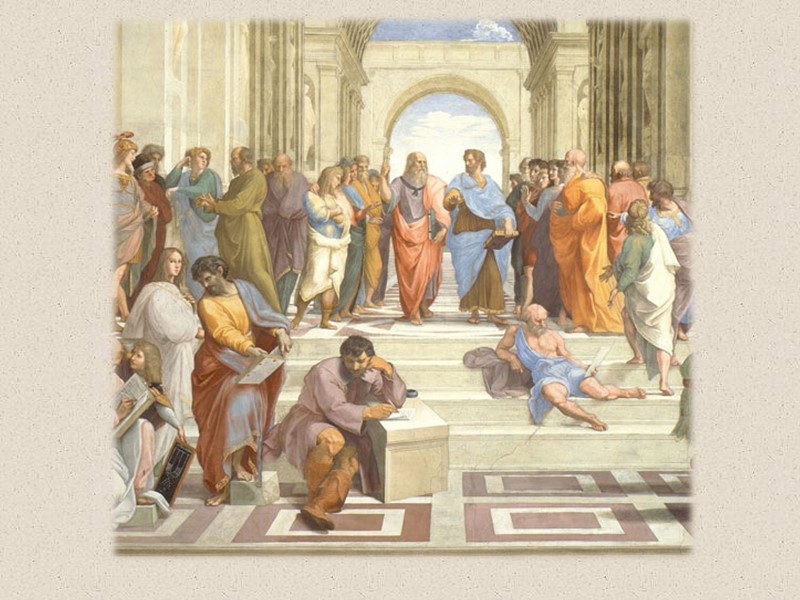
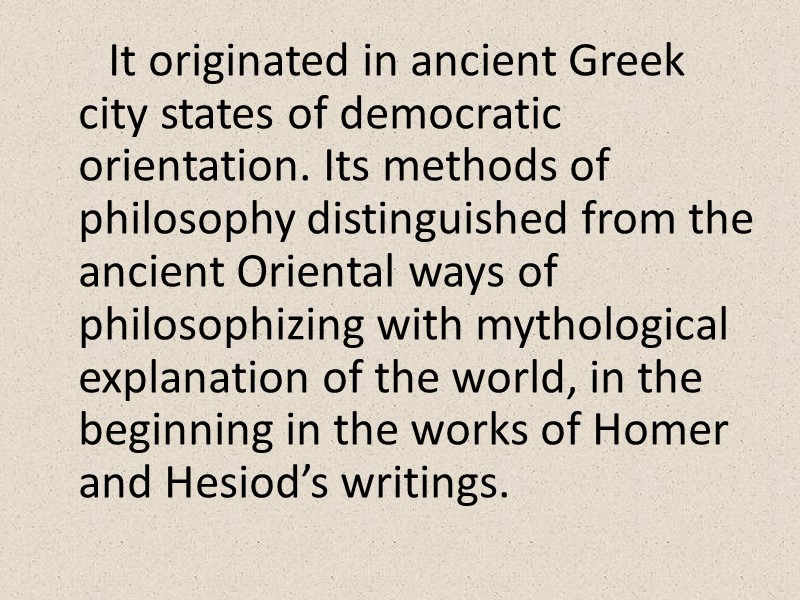
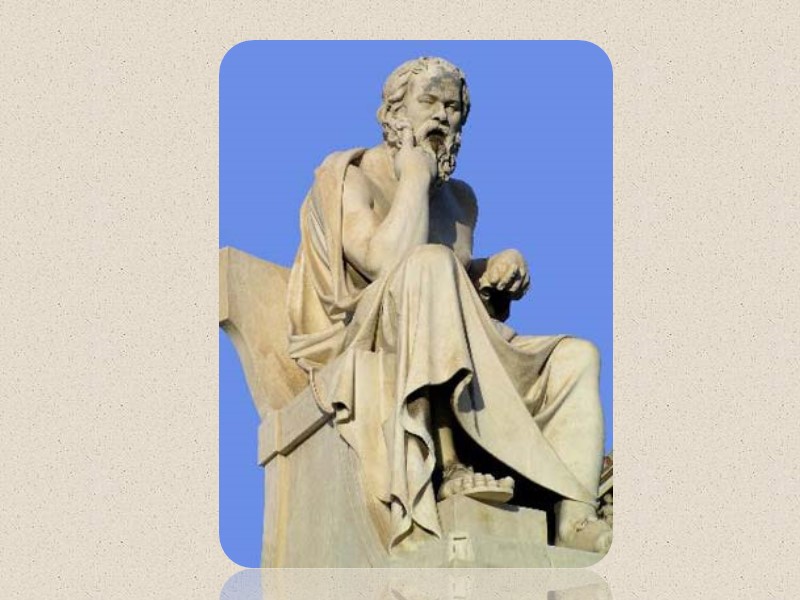
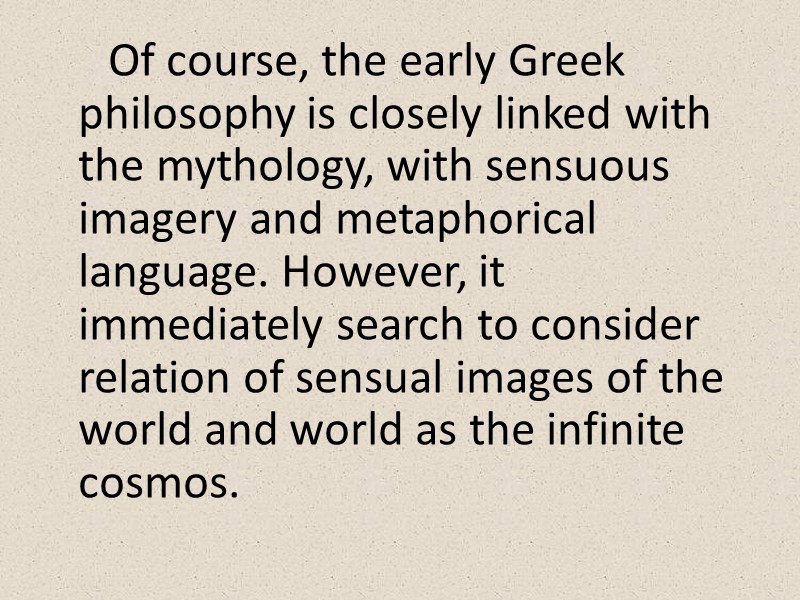
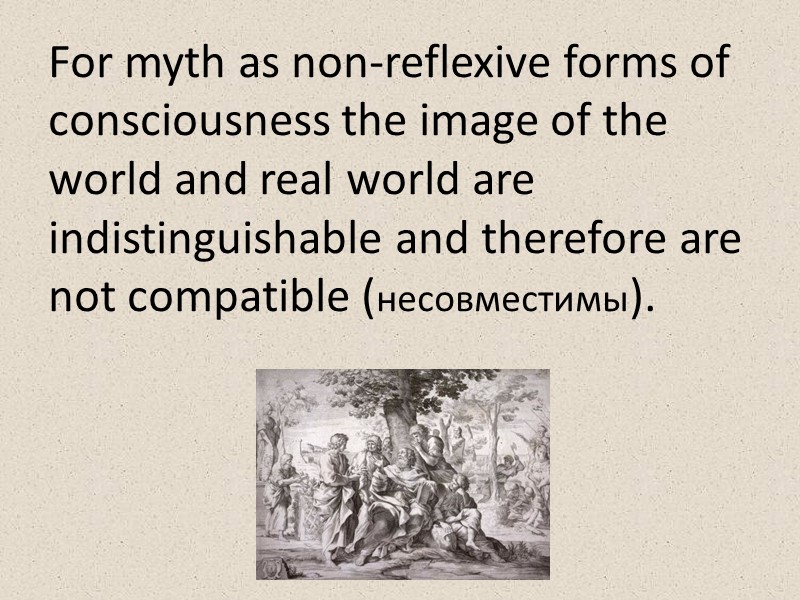
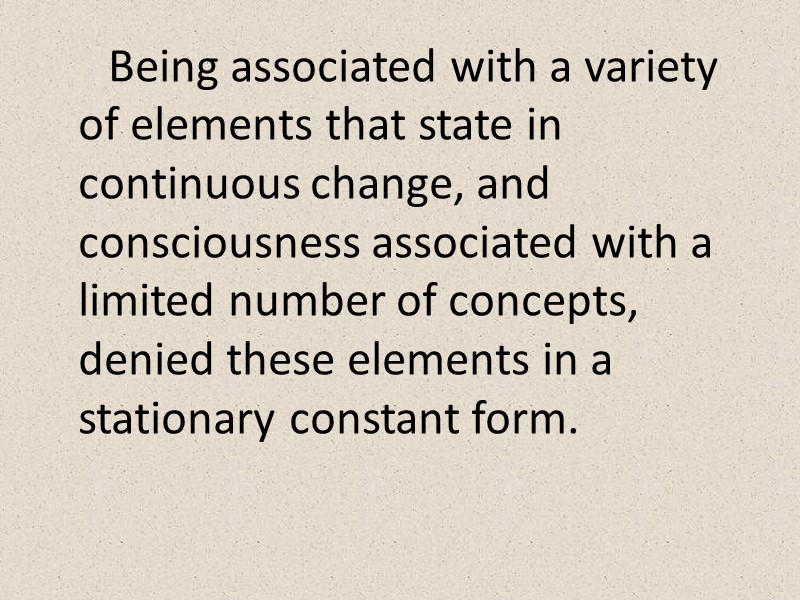
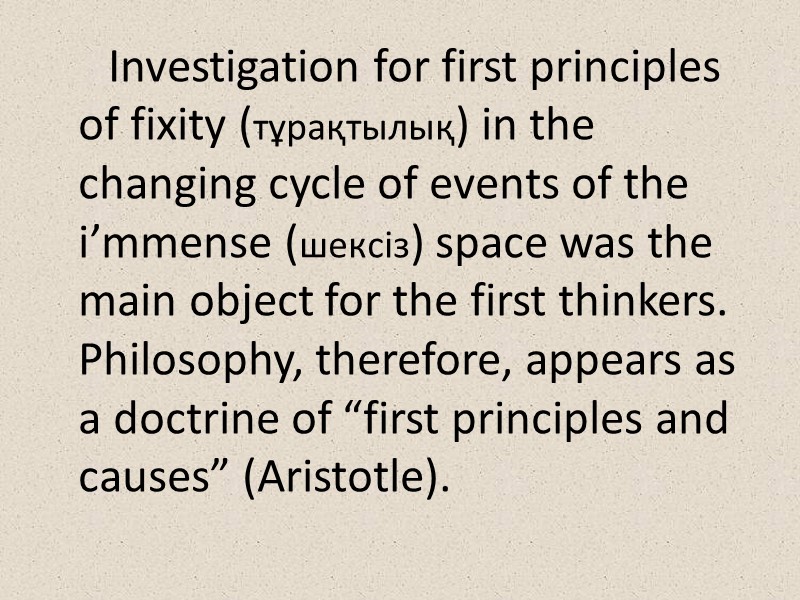
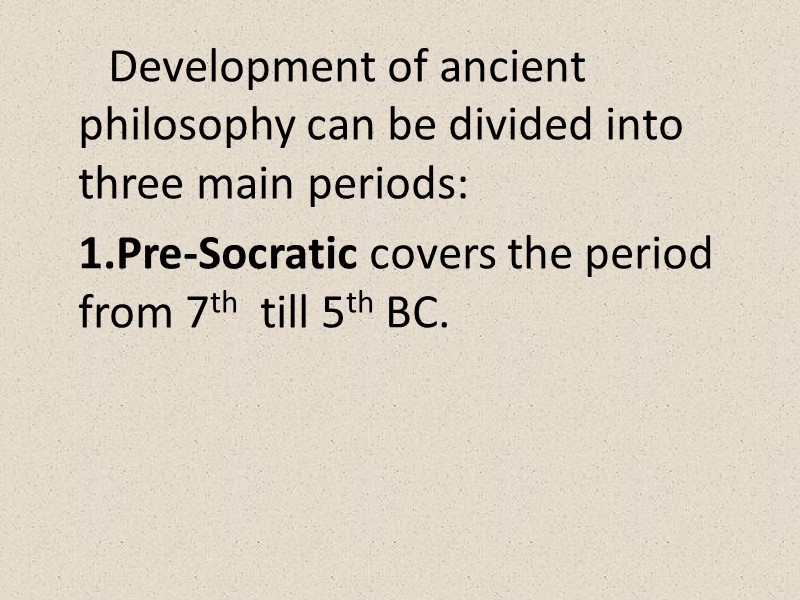
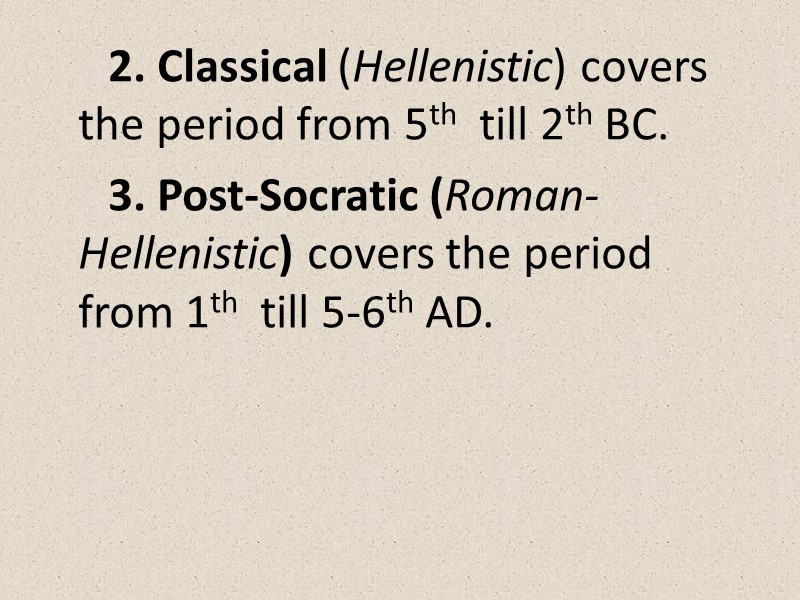
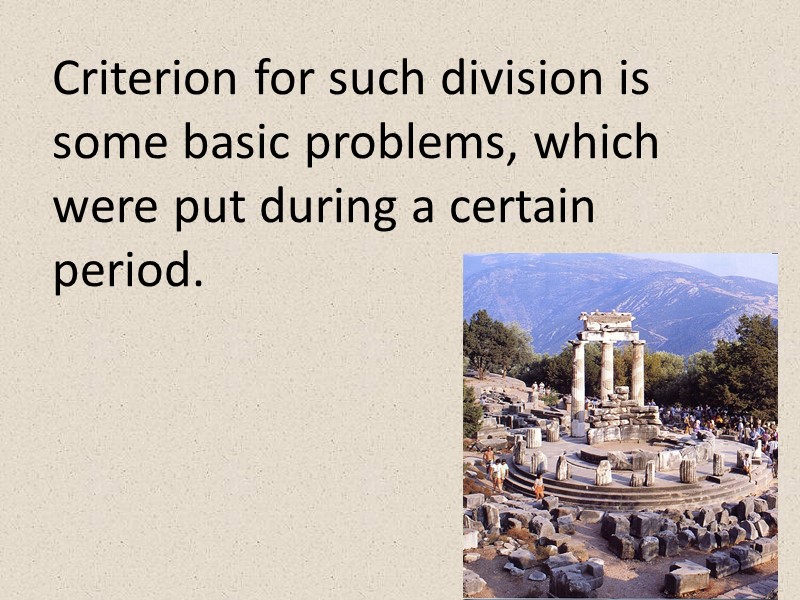
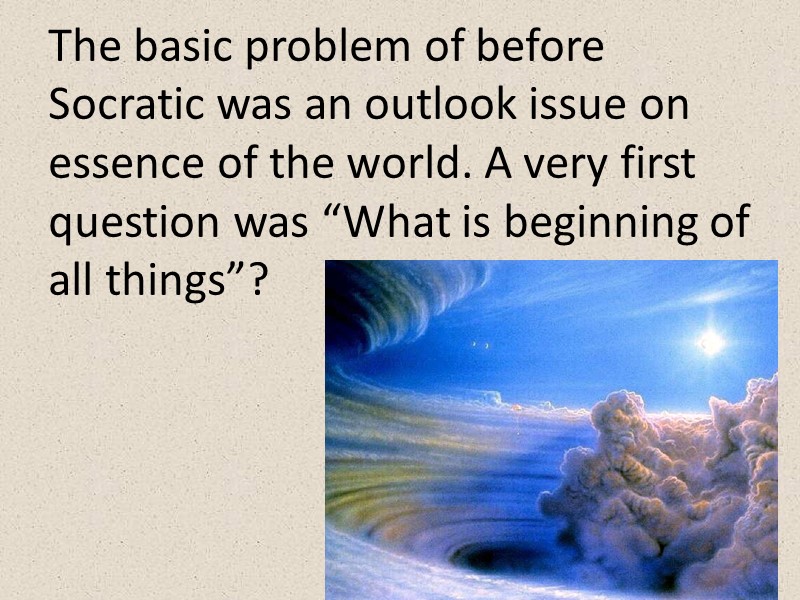
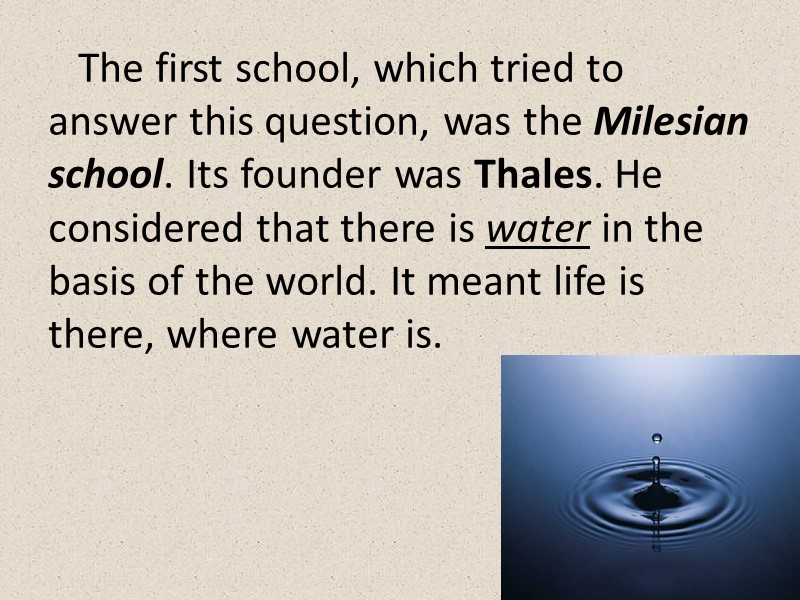
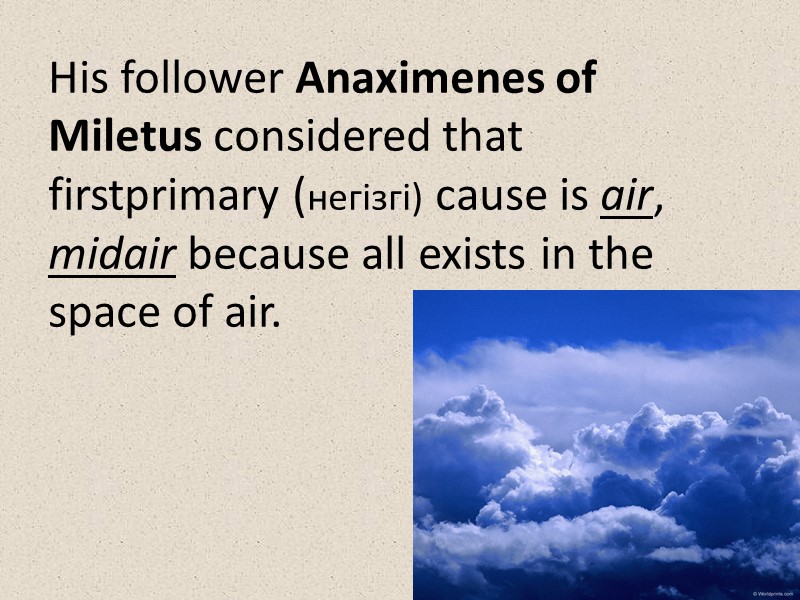
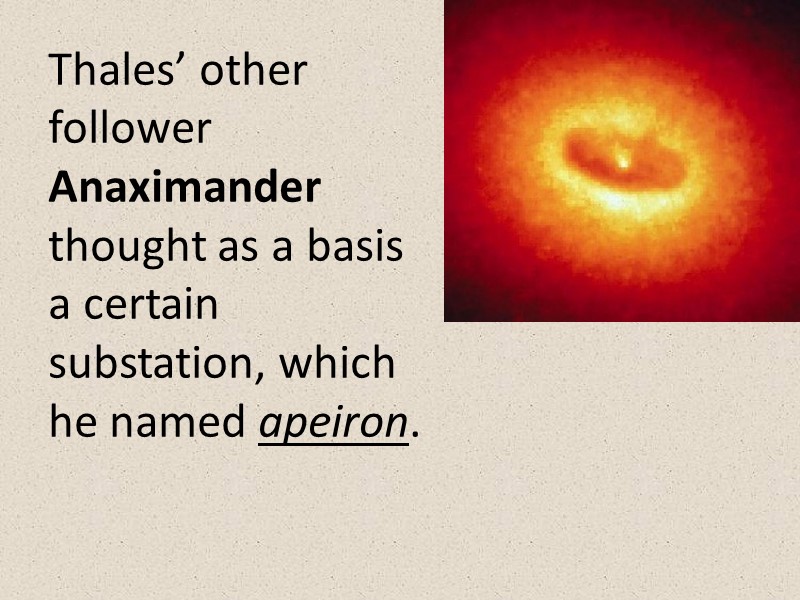
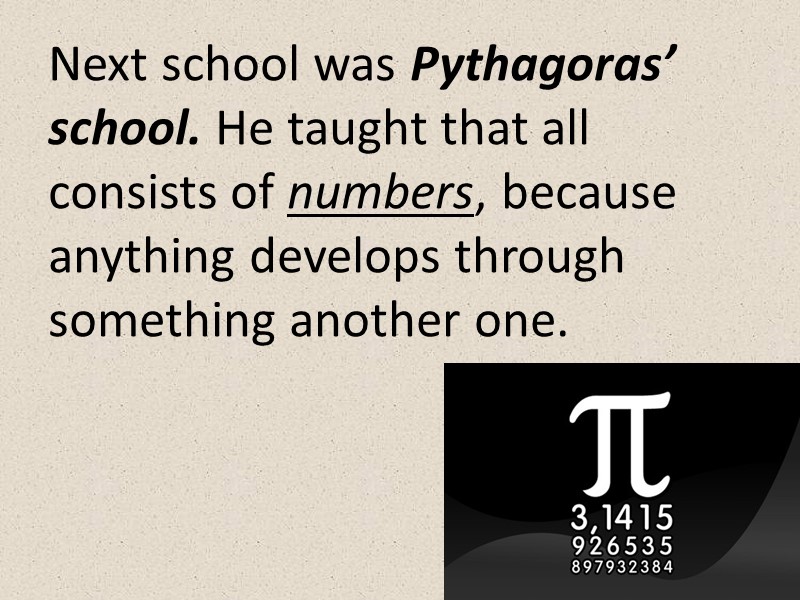
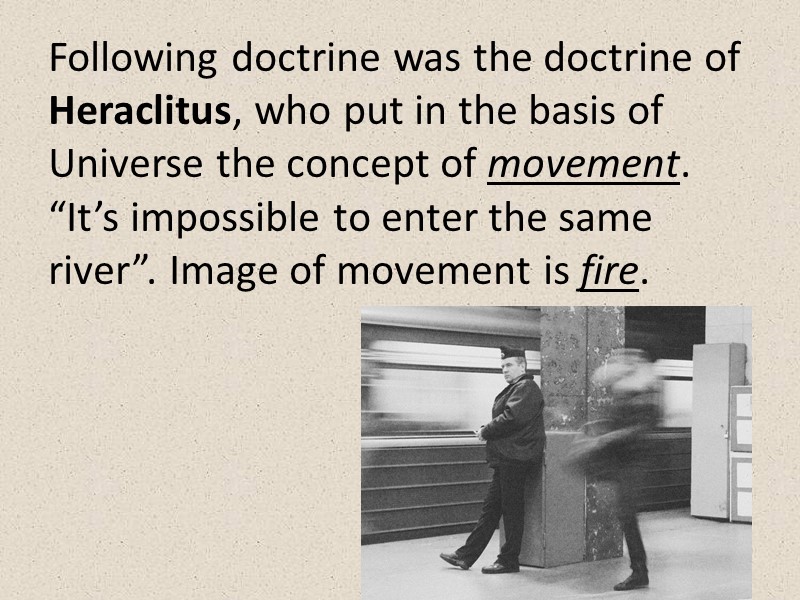
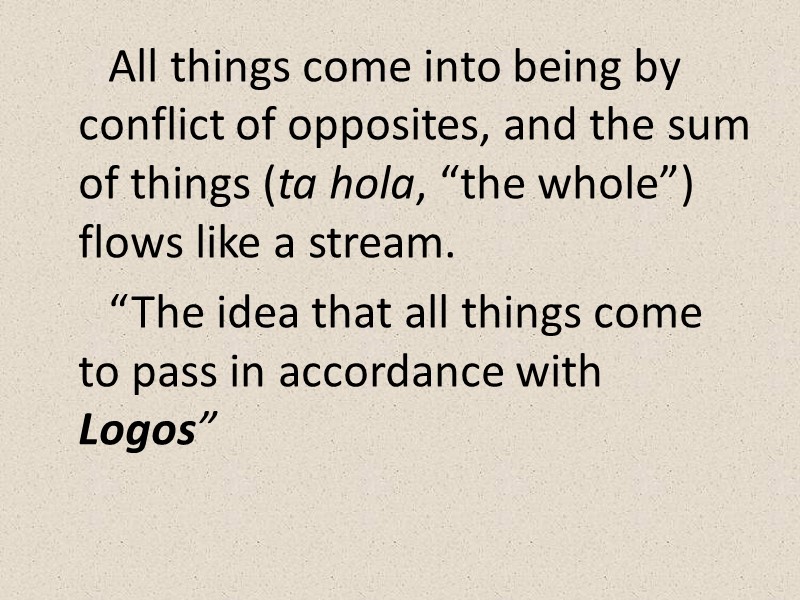
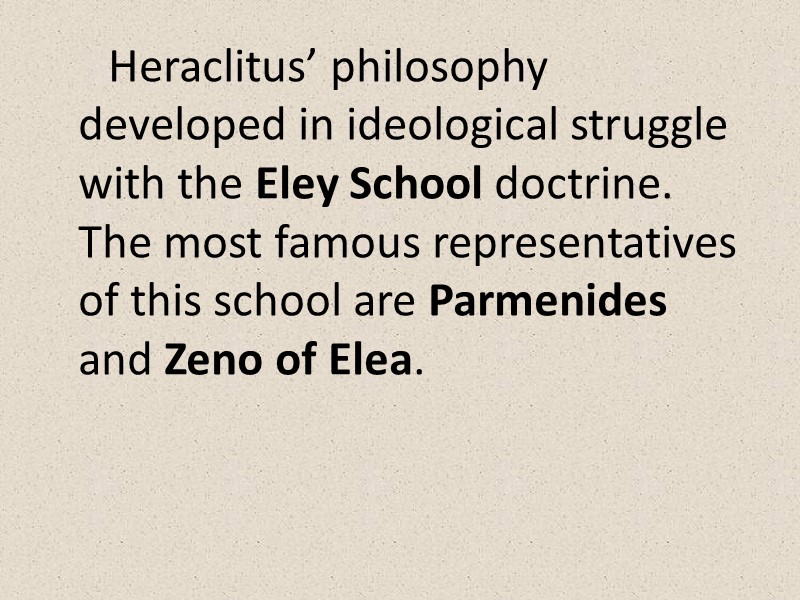
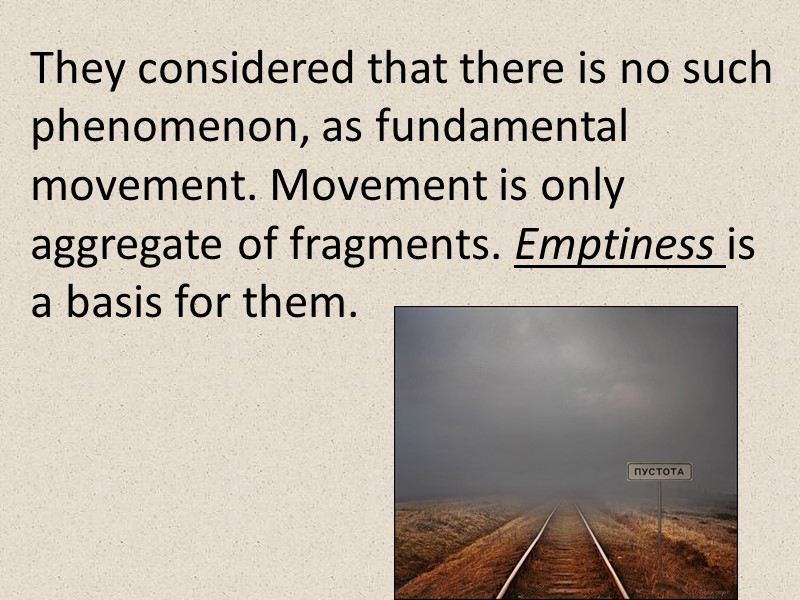
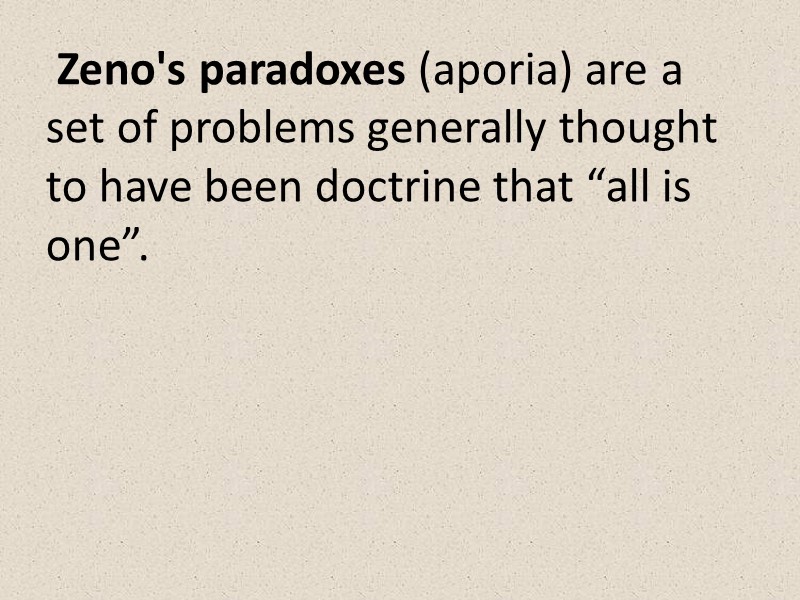
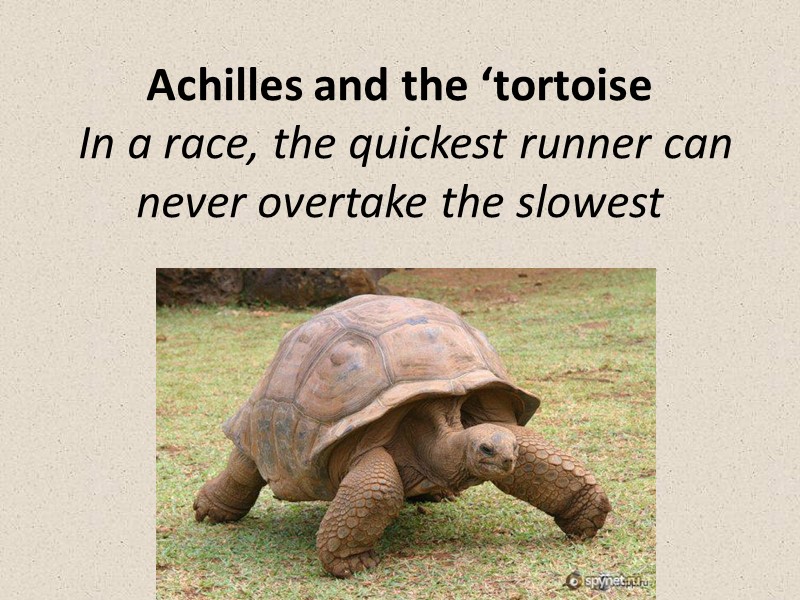
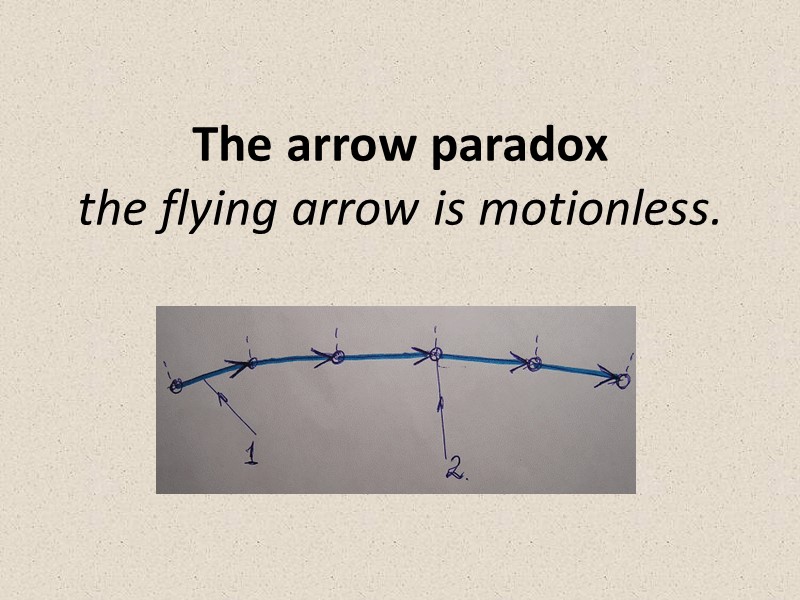
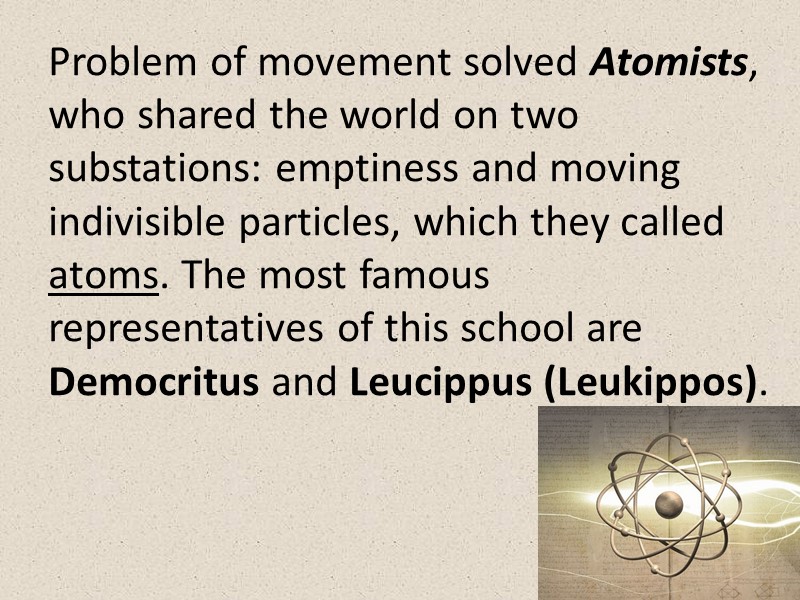
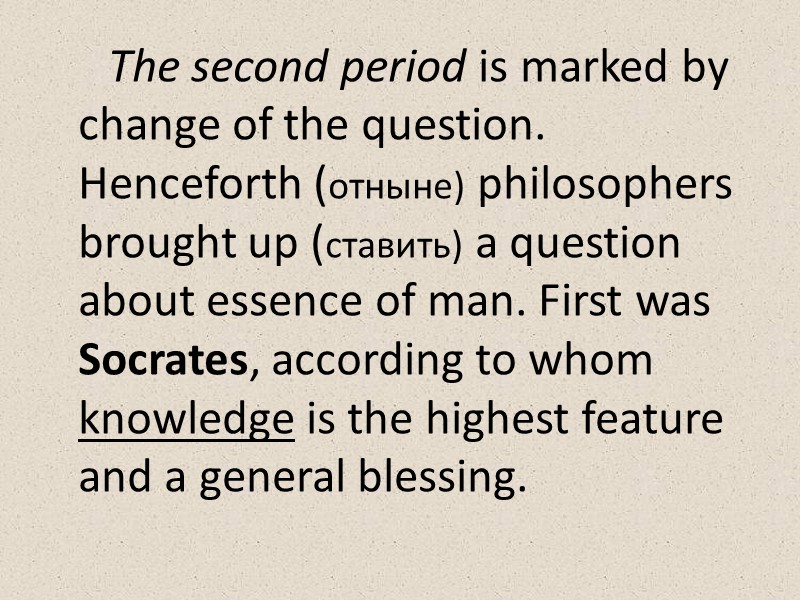
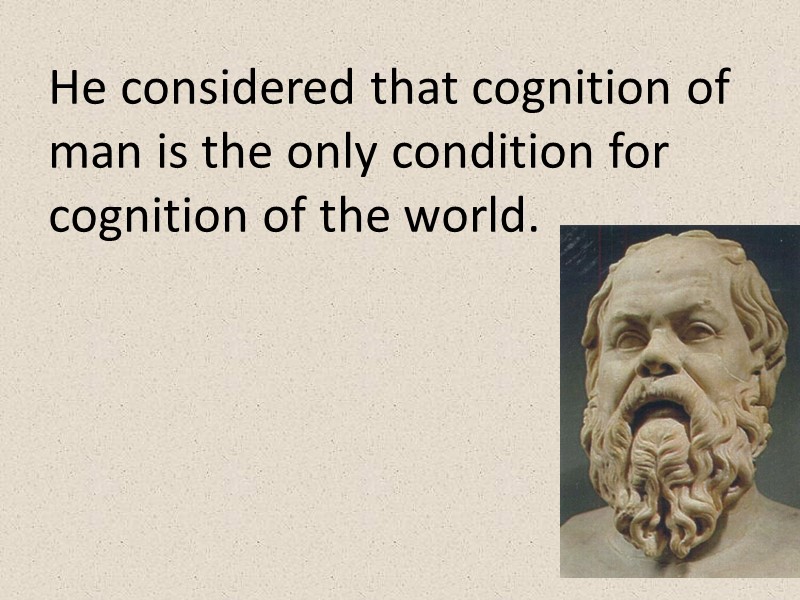
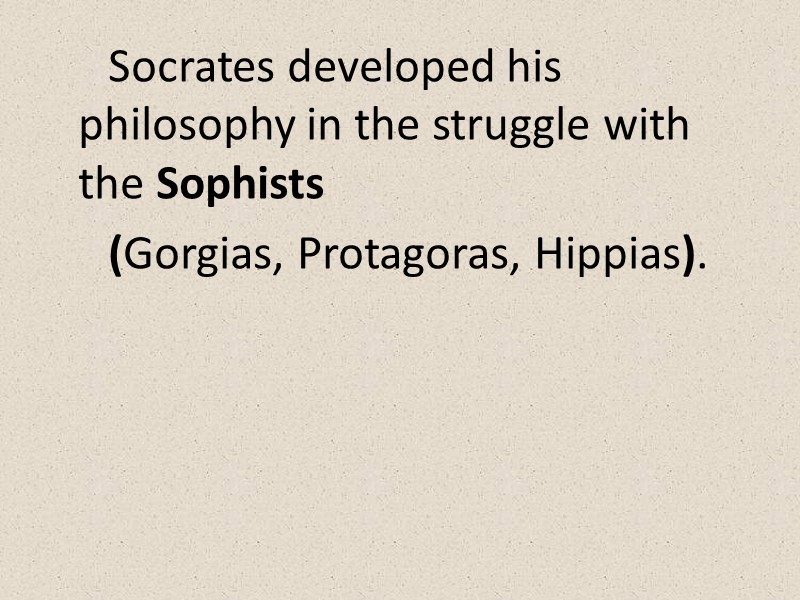
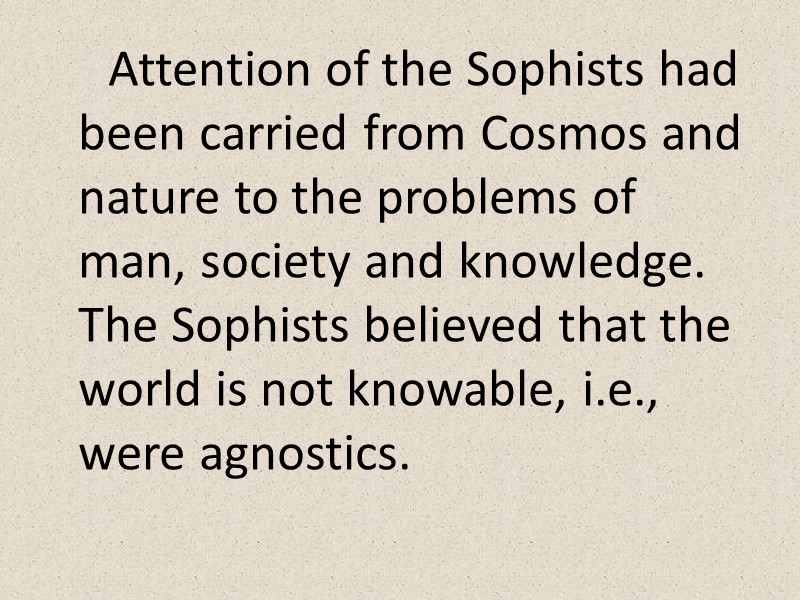
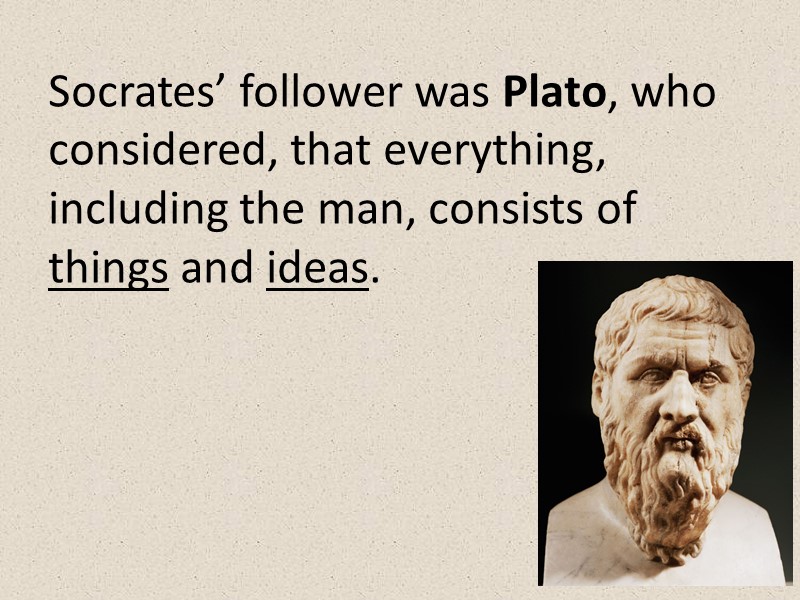
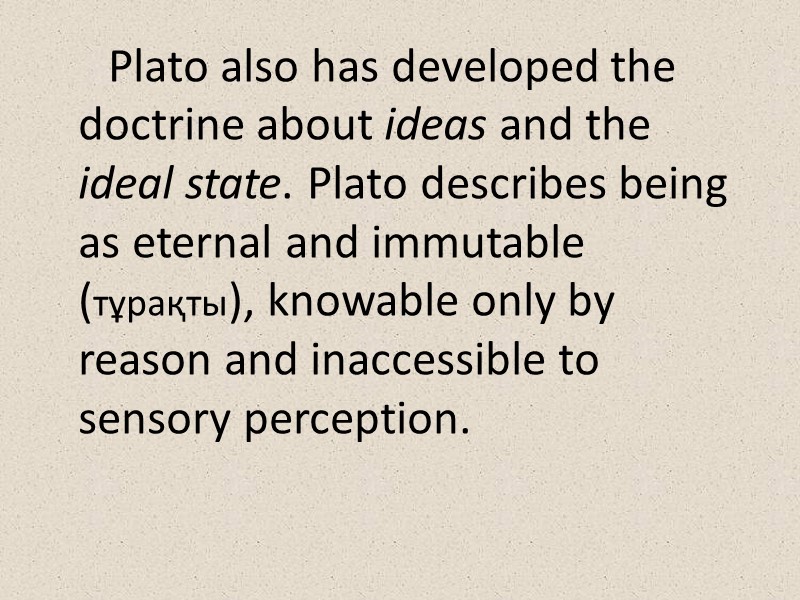
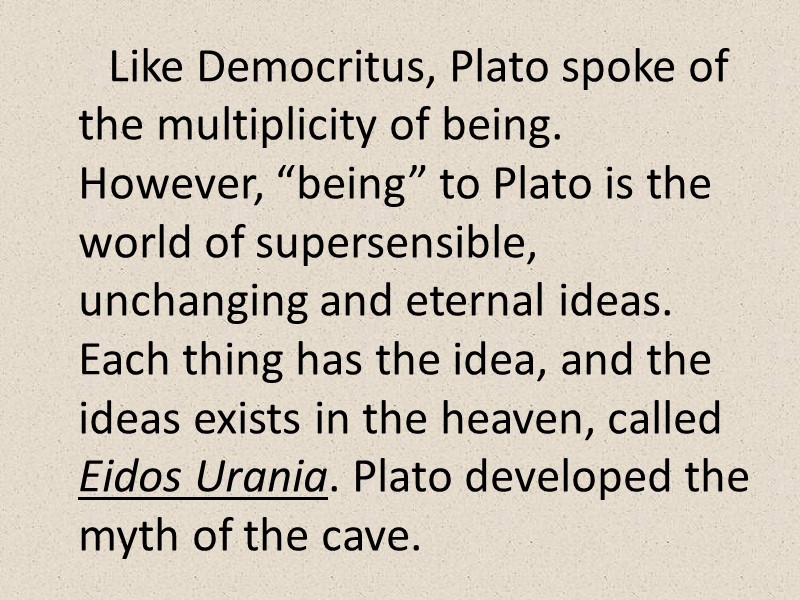
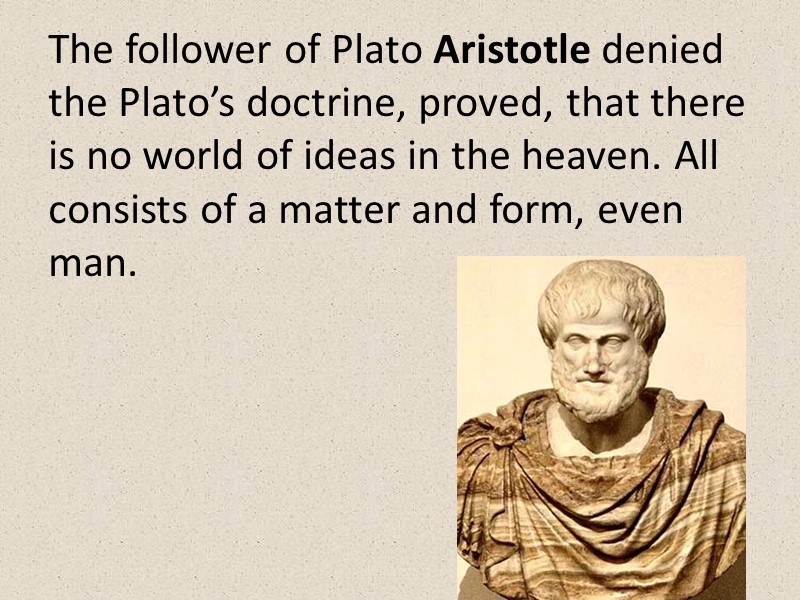
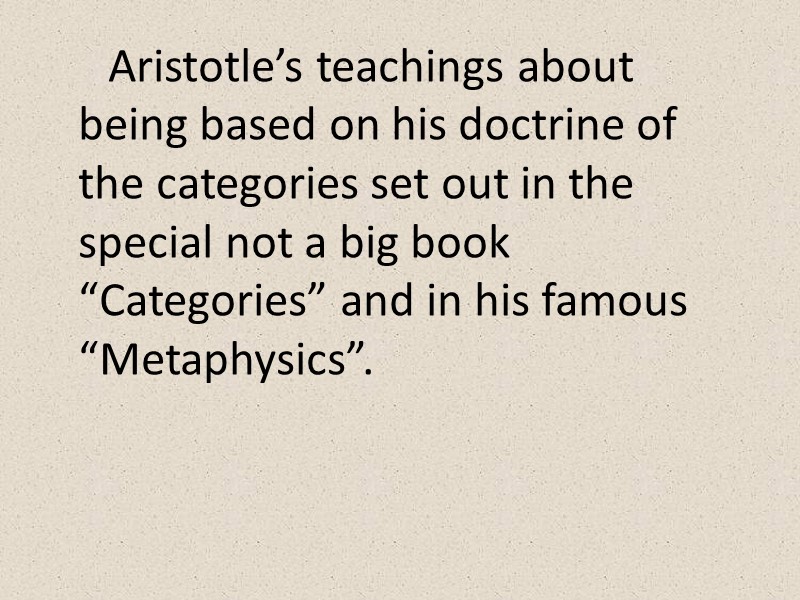
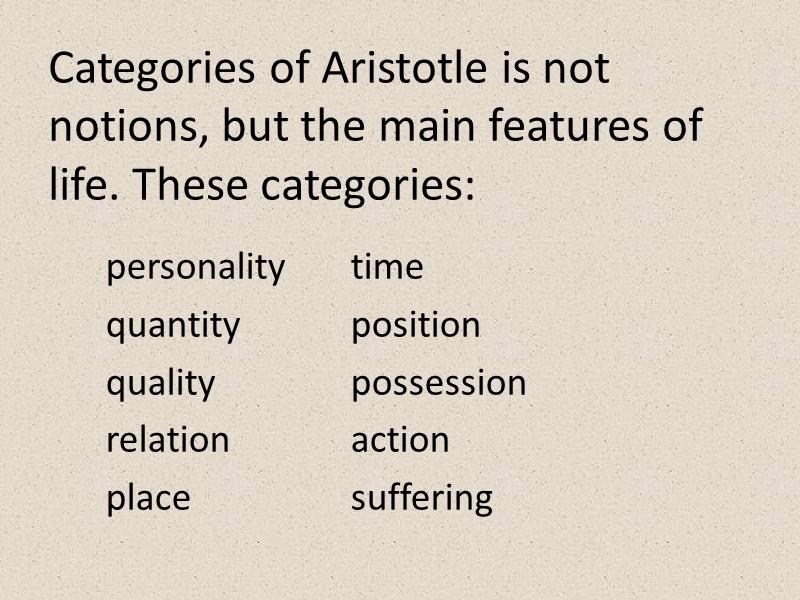
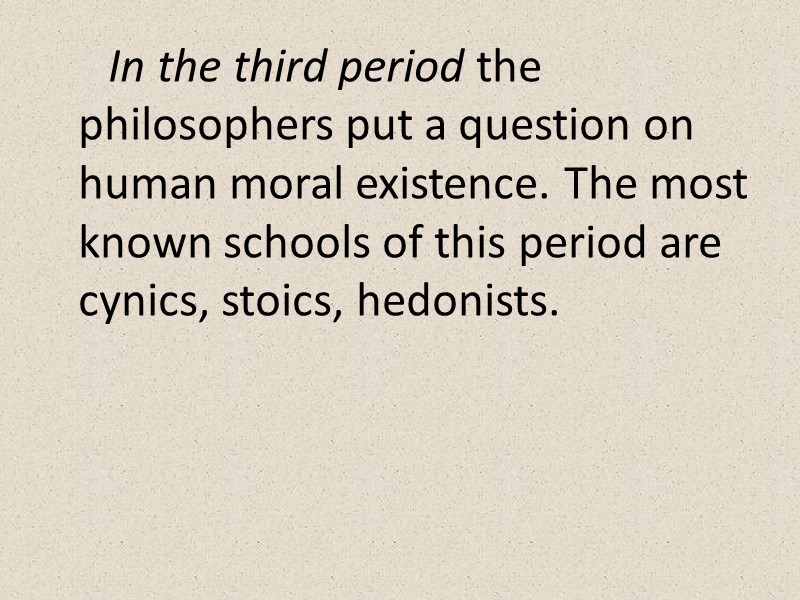
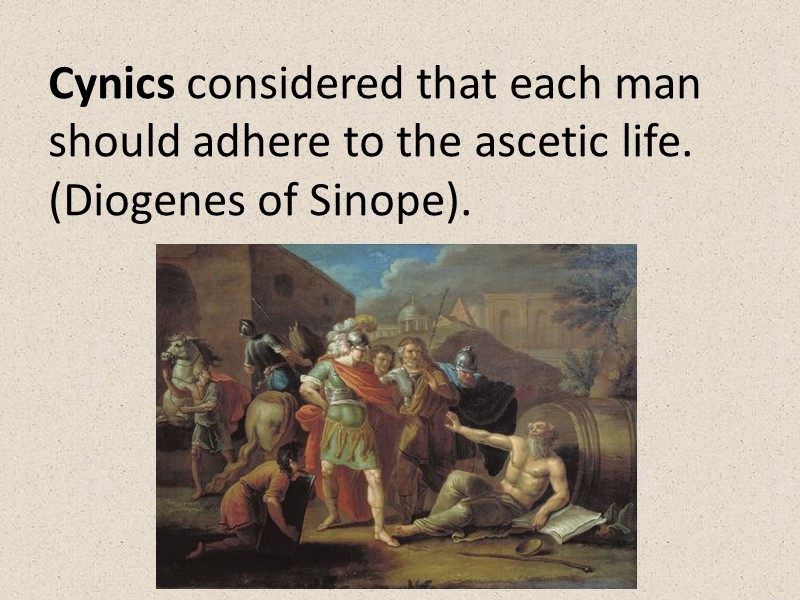
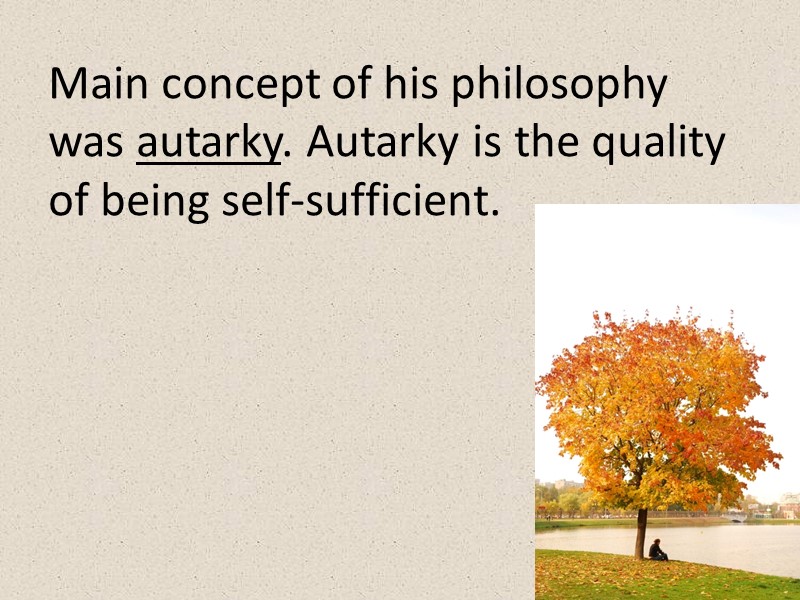
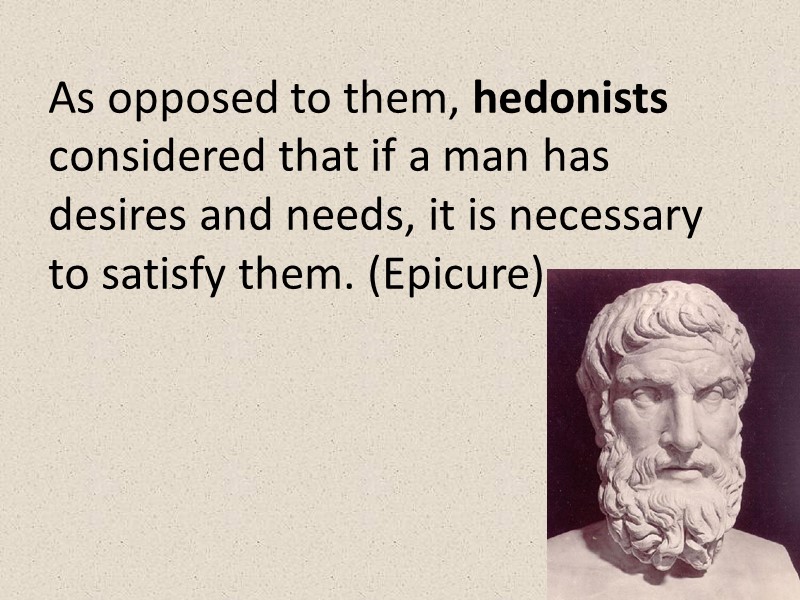
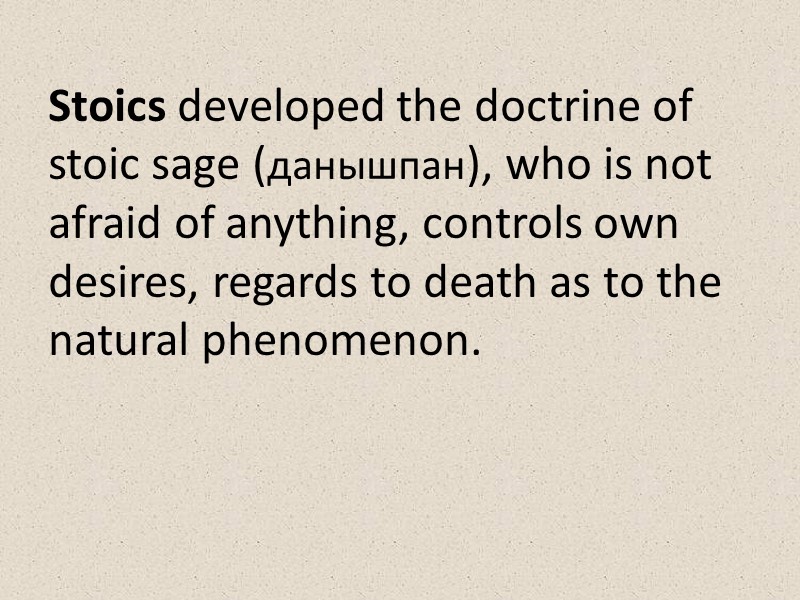
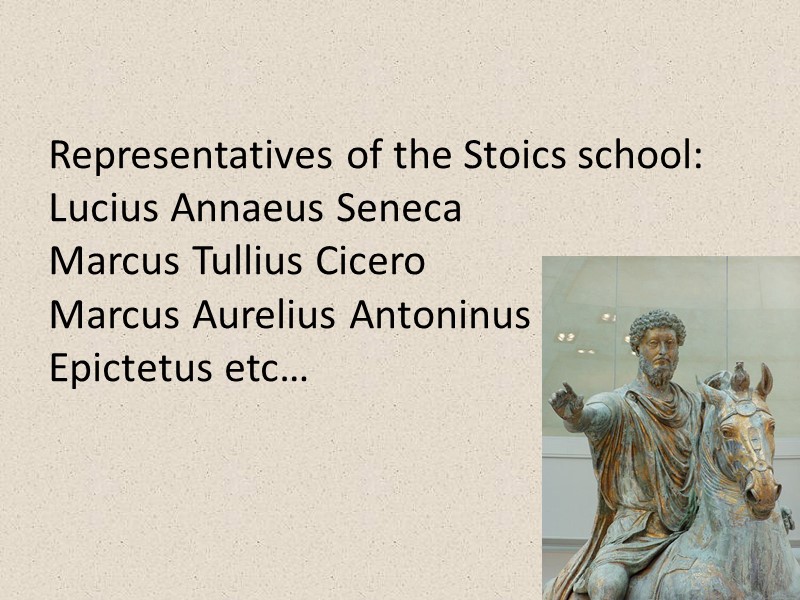
26806-lecture_3._ancient_greec-roman_philosophy.ppt
- Количество слайдов: 41
 Ancient Greek-Roman philosophy
Ancient Greek-Roman philosophy
 Ancient Greek and then Roman Mythology and Philosophy covers the period of 11-12 centuries from 6-5 BC. till 5-6 AD.
Ancient Greek and then Roman Mythology and Philosophy covers the period of 11-12 centuries from 6-5 BC. till 5-6 AD.

 It originated in ancient Greek city states of democratic orientation. Its methods of philosophy distinguished from the ancient Oriental ways of philosophizing with mythological explanation of the world, in the beginning in the works of Homer and Hesiod’s writings.
It originated in ancient Greek city states of democratic orientation. Its methods of philosophy distinguished from the ancient Oriental ways of philosophizing with mythological explanation of the world, in the beginning in the works of Homer and Hesiod’s writings.

 Of course, the early Greek philosophy is closely linked with the mythology, with sensuous imagery and metaphorical language. However, it immediately search to consider relation of sensual images of the world and world as the infinite cosmos.
Of course, the early Greek philosophy is closely linked with the mythology, with sensuous imagery and metaphorical language. However, it immediately search to consider relation of sensual images of the world and world as the infinite cosmos.
 For myth as non-reflexive forms of consciousness the image of the world and real world are indistinguishable and therefore are not compatible (несовместимы).
For myth as non-reflexive forms of consciousness the image of the world and real world are indistinguishable and therefore are not compatible (несовместимы).
 Being associated with a variety of elements that state in continuous change, and consciousness associated with a limited number of concepts, denied these elements in a stationary constant form.
Being associated with a variety of elements that state in continuous change, and consciousness associated with a limited number of concepts, denied these elements in a stationary constant form.
 Investigation for first principles of fixity (тұрақтылық) in the changing cycle of events of the i’mmense (шексіз) space was the main object for the first thinkers. Philosophy, therefore, appears as a doctrine of “first principles and causes” (Aristotle).
Investigation for first principles of fixity (тұрақтылық) in the changing cycle of events of the i’mmense (шексіз) space was the main object for the first thinkers. Philosophy, therefore, appears as a doctrine of “first principles and causes” (Aristotle).
 Development of ancient philosophy can be divided into three main periods: Pre-Socratic covers the period from 7th till 5th BC.
Development of ancient philosophy can be divided into three main periods: Pre-Socratic covers the period from 7th till 5th BC.
 2. Classical (Hellenistic) covers the period from 5th till 2th BC. 3. Post-Socratic (Roman- Hellenistic) covers the period from 1th till 5-6th AD.
2. Classical (Hellenistic) covers the period from 5th till 2th BC. 3. Post-Socratic (Roman- Hellenistic) covers the period from 1th till 5-6th AD.
 Criterion for such division is some basic problems, which were put during a certain period.
Criterion for such division is some basic problems, which were put during a certain period.
 The basic problem of before Socratic was an outlook issue on essence of the world. A very first question was “What is beginning of all things”?
The basic problem of before Socratic was an outlook issue on essence of the world. A very first question was “What is beginning of all things”?
 The first school, which tried to answer this question, was the Milesian school. Its founder was Thales. He considered that there is water in the basis of the world. It meant life is there, where water is.
The first school, which tried to answer this question, was the Milesian school. Its founder was Thales. He considered that there is water in the basis of the world. It meant life is there, where water is.
 His follower Anaximenes of Miletus considered that firstprimary (негізгі) cause is air, midair because all exists in the space of air.
His follower Anaximenes of Miletus considered that firstprimary (негізгі) cause is air, midair because all exists in the space of air.
 Thales’ other follower Anaximander thought as a basis a certain substation, which he named apeiron.
Thales’ other follower Anaximander thought as a basis a certain substation, which he named apeiron.
 Next school was Pythagoras’ school. He taught that all consists of numbers, because anything develops through something another one.
Next school was Pythagoras’ school. He taught that all consists of numbers, because anything develops through something another one.
 Following doctrine was the doctrine of Heraclitus, who put in the basis of Universe the concept of movement. “It’s impossible to enter the same river”. Image of movement is fire.
Following doctrine was the doctrine of Heraclitus, who put in the basis of Universe the concept of movement. “It’s impossible to enter the same river”. Image of movement is fire.
 All things come into being by conflict of opposites, and the sum of things (ta hola, “the whole”) flows like a stream. “The idea that all things come to pass in accordance with Logos”
All things come into being by conflict of opposites, and the sum of things (ta hola, “the whole”) flows like a stream. “The idea that all things come to pass in accordance with Logos”
 Heraclitus’ philosophy developed in ideological struggle with the Eley School doctrine. The most famous representatives of this school are Parmenides and Zeno of Elea.
Heraclitus’ philosophy developed in ideological struggle with the Eley School doctrine. The most famous representatives of this school are Parmenides and Zeno of Elea.
 They considered that there is no such phenomenon, as fundamental movement. Movement is only aggregate of fragments. Emptiness is a basis for them.
They considered that there is no such phenomenon, as fundamental movement. Movement is only aggregate of fragments. Emptiness is a basis for them.
 Zeno's paradoxes (aporia) are a set of problems generally thought to have been doctrine that “all is one”.
Zeno's paradoxes (aporia) are a set of problems generally thought to have been doctrine that “all is one”.
 Achilles and the ‘tortoise In a race, the quickest runner can never overtake the slowest
Achilles and the ‘tortoise In a race, the quickest runner can never overtake the slowest
 The arrow paradox the flying arrow is motionless.
The arrow paradox the flying arrow is motionless.
 Problem of movement solved Atomists, who shared the world on two substations: emptiness and moving indivisible particles, which they called atoms. The most famous representatives of this school are Democritus and Leucippus (Leukippos).
Problem of movement solved Atomists, who shared the world on two substations: emptiness and moving indivisible particles, which they called atoms. The most famous representatives of this school are Democritus and Leucippus (Leukippos).
 The second period is marked by change of the question. Henceforth (отныне) philosophers brought up (ставить) a question about essence of man. First was Socrates, according to whom knowledge is the highest feature and a general blessing.
The second period is marked by change of the question. Henceforth (отныне) philosophers brought up (ставить) a question about essence of man. First was Socrates, according to whom knowledge is the highest feature and a general blessing.
 He considered that cognition of man is the only condition for cognition of the world.
He considered that cognition of man is the only condition for cognition of the world.
 Socrates developed his philosophy in the struggle with the Sophists (Gorgias, Protagoras, Hippias).
Socrates developed his philosophy in the struggle with the Sophists (Gorgias, Protagoras, Hippias).
 Attention of the Sophists had been carried from Cosmos and nature to the problems of man, society and knowledge. The Sophists believed that the world is not knowable, i.e., were agnostics.
Attention of the Sophists had been carried from Cosmos and nature to the problems of man, society and knowledge. The Sophists believed that the world is not knowable, i.e., were agnostics.
 Socrates’ follower was Plato, who considered, that everything, including the man, consists of things and ideas.
Socrates’ follower was Plato, who considered, that everything, including the man, consists of things and ideas.
 Plato also has developed the doctrine about ideas and the ideal state. Plato describes being as eternal and immutable (тұрақты), knowable only by reason and inaccessible to sensory perception.
Plato also has developed the doctrine about ideas and the ideal state. Plato describes being as eternal and immutable (тұрақты), knowable only by reason and inaccessible to sensory perception.
 Like Democritus, Plato spoke of the multiplicity of being. However, “being” to Plato is the world of supersensible, unchanging and eternal ideas. Each thing has the idea, and the ideas exists in the heaven, called Eidos Urania. Plato developed the myth of the cave.
Like Democritus, Plato spoke of the multiplicity of being. However, “being” to Plato is the world of supersensible, unchanging and eternal ideas. Each thing has the idea, and the ideas exists in the heaven, called Eidos Urania. Plato developed the myth of the cave.
 The follower of Plato Aristotle denied the Plato’s doctrine, proved, that there is no world of ideas in the heaven. All consists of a matter and form, even man.
The follower of Plato Aristotle denied the Plato’s doctrine, proved, that there is no world of ideas in the heaven. All consists of a matter and form, even man.
 Aristotle’s teachings about being based on his doctrine of the categories set out in the special not a big book “Categories” and in his famous “Metaphysics”.
Aristotle’s teachings about being based on his doctrine of the categories set out in the special not a big book “Categories” and in his famous “Metaphysics”.
 Categories of Aristotle is not notions, but the main features of life. These categories: personality quantity quality relation place time position possession action suffering
Categories of Aristotle is not notions, but the main features of life. These categories: personality quantity quality relation place time position possession action suffering
 In the third period the philosophers put a question on human moral existence. The most known schools of this period are cynics, stoics, hedonists.
In the third period the philosophers put a question on human moral existence. The most known schools of this period are cynics, stoics, hedonists.
 Cynics considered that each man should adhere to the ascetic life. (Diogenes of Sinope).
Cynics considered that each man should adhere to the ascetic life. (Diogenes of Sinope).
 Main concept of his philosophy was autarky. Autarky is the quality of being self-sufficient.
Main concept of his philosophy was autarky. Autarky is the quality of being self-sufficient.
 As opposed to them, hedonists considered that if a man has desires and needs, it is necessary to satisfy them. (Epicure).
As opposed to them, hedonists considered that if a man has desires and needs, it is necessary to satisfy them. (Epicure).
 Stoics developed the doctrine of stoic sage (данышпан), who is not afraid of anything, controls own desires, regards to death as to the natural phenomenon.
Stoics developed the doctrine of stoic sage (данышпан), who is not afraid of anything, controls own desires, regards to death as to the natural phenomenon.
 Representatives of the Stoics school: Lucius Annaeus Seneca Marcus Tullius Cicero Marcus Aurelius Antoninus Epictetus etc…
Representatives of the Stoics school: Lucius Annaeus Seneca Marcus Tullius Cicero Marcus Aurelius Antoninus Epictetus etc…

